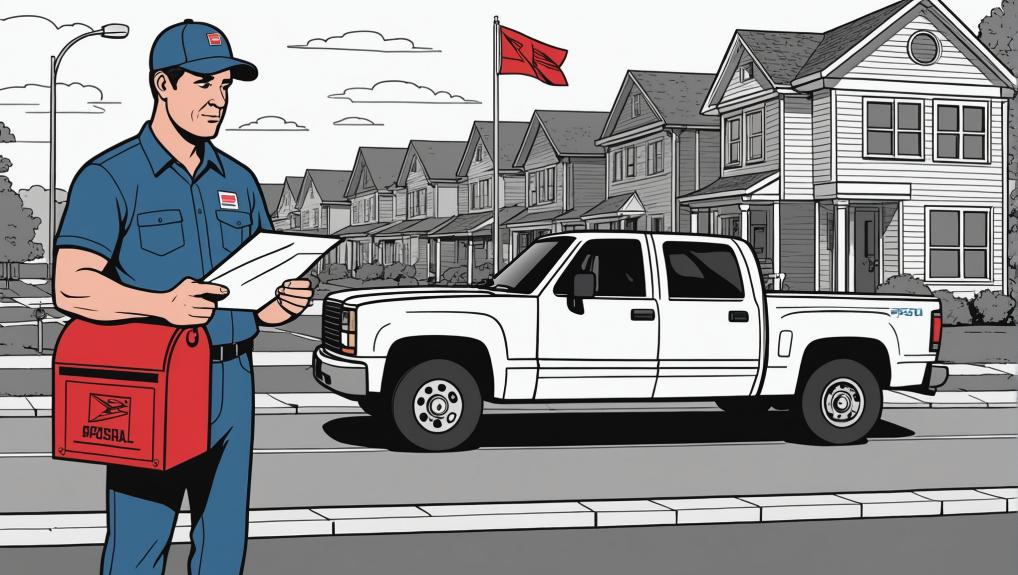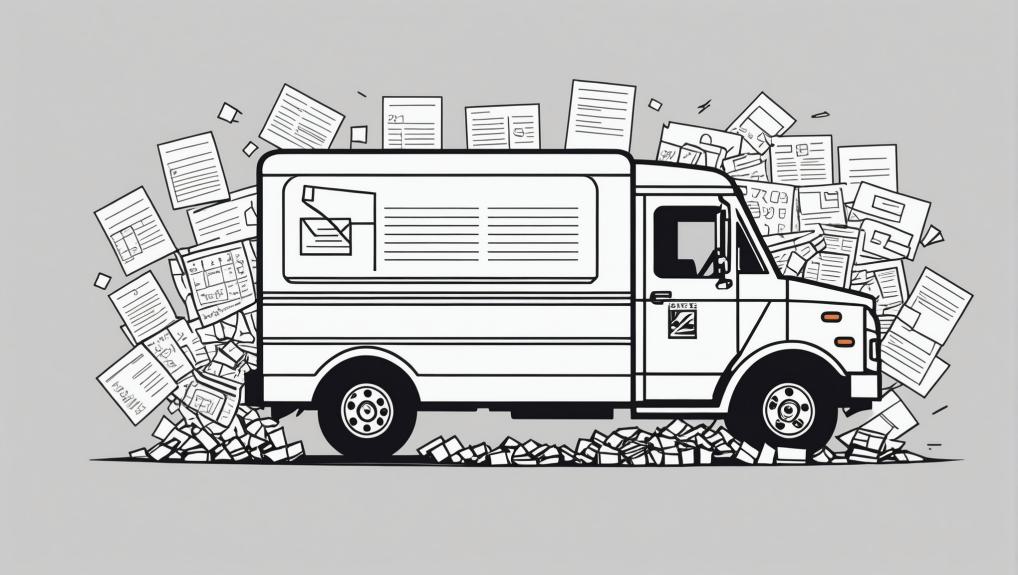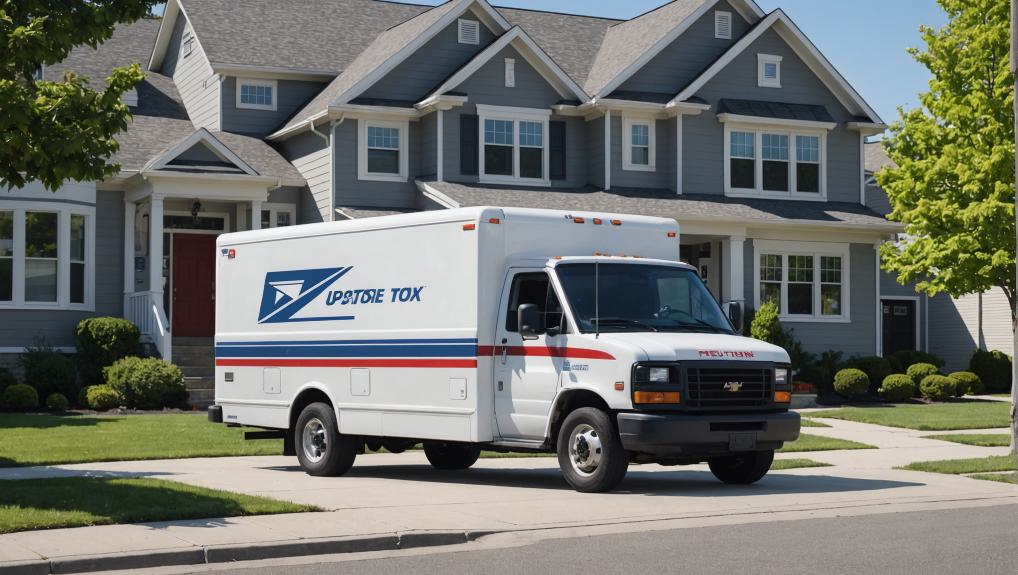Handling missed USPS deliveries feels like hitting a brick wall, especially when valuable packages hang in the balance. Knowing how long USPS waits before sending your package back unlocks the secret to beating wasted time and extra fees. This little nugget can save big headaches and money, and anyone relying on USPS for important shipments will thank themselves for the heads-up. Keep reading to uncover the insider scoop that turns delivery mess-ups into smooth wins.
When USPS fails to deliver a package, it isn’t immediately returned to the sender. The holding periods vary by mailing service: Priority Mail Express packages are held for up to 5 days, Certified Mail for up to 15 days, and international shipments for up to 30 days.
A common pain point is the inconvenience caused by missed deliveries, often resulting in unexpected returns and added expenses for both senders and recipients. Knowing these timeframes can help you manage and mitigate these issues effectively.
In this guide, I’ll explain the specifics of USPS’s return policies, provide insights to avoid failed deliveries, and help ensure your packages reach their intended destinations without a hitch.
Key Takeaways
- USPS holds undelivered packages from 5 to 30 days, varying by service type, before returning them to the sender.
- Failed deliveries trigger a notice (PS Form 3849), offering redelivery or local post office pickup options for recipients.
- Accurate addressing, proper postage, and secure packaging are essential to prevent USPS packages from being returned to the sender.
- Tracking numbers are crucial for monitoring package status, especially during the return process, ensuring timely and efficient delivery management.
What is the USPS Failed Delivery Process?

The USPS failed delivery process ensures recipients have multiple chances to receive their mail after an initial unsuccessful attempt. When a delivery fails, the USPS carrier leaves a delivery attempt notice, known as PS Form 3849.
This form provides crucial instructions and informs the recipient about the missed delivery, offering options for redelivery or local post office pickup.
You can request redelivery through several convenient methods. They may visit the USPS Redelivery website, using the tracking or barcode number from the notice to schedule a new attempt.
Alternatively, you can call 1-800-ASK-USPS (1-800-275-8777) to arrange redelivery or choose to visit their local post office to pick up the item. Another option is to fill out the PS Form 3849 and leave it for the mail carrier to schedule a redelivery.
How Long Does USPS Hold a Package After a Failed Delivery Attempt?
USPS holds packages for different durations based on the service type. For Priority Mail Express, packages are held for up to 5 days. Collect on Delivery (COD) packages are kept for up to 10 days. Certified Mail and other services requiring a signature offer a pickup window of up to 15 days.
International Mail items are generally held for up to 30 days, although inbound Express Mail Service packages are held for 5 days unless specified otherwise by the sender.
When a delivery attempt notice is left, recipients can request redelivery or pick up their package personally.
USPS provides an online platform for tracking delivery status and arranging redelivery, allowing recipients to manage their packages efficiently and avoid unnecessary delays.
What happens when USPS fails to deliver?

When USPS fails to deliver a package, they initiate several steps to ensure the recipient can still receive it. The mail carrier leaves a delivery notice, known as PS Form 3849, ‘We ReDeliver for You!’
This form informs the recipient of the missed delivery and provides instructions on how to arrange for redelivery.
You can reschedule their delivery through several methods. You may visit the USPS Redelivery website, call 1-800-ASK-USPS (1-800-275-8777), visit the local Post Office, or fill out and leave the PS Form 3849 for the mail carrier.
These options offer flexibility, ensuring recipients can receive their packages without unnecessary delays.
If redelivery isn’t scheduled, USPS holds the package at the local Post Office for a specific period, depending on the mail service used.
For example, Priority Mail Express is held for five days, while Certified Mail is held for fifteen days. If the package remains undeliverable after the holding period, it enters the return to sender process.
What Are the Common Reasons for a USPS Package Being Returned to Sender?
Common reasons for a USPS package being returned to the sender include address issues, recipient complications, and package-related problems.
First, an incorrect or incomplete address can stop a package from reaching its destination. Invalid delivery addresses and non-barcoded mailpieces might not process correctly in USPS automated systems. Such errors often lead to the package being returned to the sender.
Recipient-related issues are also significant. If the recipient isn’t found at the provided address or has moved without leaving a forwarding address, the package will be returned.
Additionally, if the recipient refuses the package or doesn’t pick it up within the USPS holding period, it’ll be sent back.
Package issues like damage during transit or multiple failed delivery attempts can also cause returns. These attempts might fail because the recipient isn’t home, there’s no secure location, or access issues like a locked gate or aggressive dog.
Understanding these factors can help reduce the risk of packages being returned, ensuring smoother deliveries.
How Can I Track a USPS Package That Is Being Returned to Sender?

To track a USPS package being returned to the sender, start with the original tracking number. You’ll find this number on the shipping receipt, the initial shipping label, or any email confirmation you received when the package was first sent.
Visit the USPS Tracking page on the official USPS website and enter your tracking number in the designated field.
Click the ‘Track’ button to see the current status of the package, including its journey back to the sender. Updates such as ‘Return to Sender Processed’ will show the package’s movement through the USPS network.
For added convenience, you can use the USPS mobile app to track the package or sign up for SMS notifications for real-time updates.
If you have any issues or need more detailed information, contact USPS customer service at 1-800-ASK-USPS (1-800-275-8777).
While tracking a return-to-sender package, you might see fewer updates compared to its initial delivery route. If the package takes longer than expected, consider filing a Missing Mail search request with USPS to locate it within their system and ensure it reaches its intended destination.
How Can I Prevent My USPS Package from Being Returned to Sender?
To prevent your USPS package from being returned to sender, follow these strategies:
- Verify the Address: Double-check the recipient’s address for completeness and precision, including apartment or suite numbers. Adhere to USPS address formatting guidelines to avoid mistakes.
- Use Correct Postage: Ensure you use the right postage based on the package’s weight and size. Insufficient postage can result in the package being returned.
- Secure Packaging: Avoid overfilling packages. Ensure they are securely sealed and protected to prevent damage in transit.
- Include a Full Return Address: Always include a complete return address on the package. This ensures it can be sent back to you if undelivered.
- Utilize USPS Services: Services like Package Intercept allow you to redirect the package if you discover an error after shipping.
- Monitor Tracking: Use the tracking number provided by USPS to monitor your package. This enables you to act quickly if issues arise.
What Are the Policies for International Shipments Returned to Sender?
USPS policies for international shipments include a detailed return process affected by incorrect addresses, unclaimed packages, recipient refusal, or prohibited items.
If a package is undeliverable, it is marked with the reason for non-delivery and sent back to the sender.
During the return process, the package goes through multiple customs checkpoints, extending the transit time, which can range from a few weeks to several months.
For services like First-Class Mail International, the package is generally returned at no extra cost.
However, Priority Mail International and Priority Mail Express International may incur return fees. If the sender believes charges were incorrect or services were not rendered as promised, they can request a refund.
To avoid returns, verify the recipient’s address and understand the import regulations of the destination country. Careful adherence to USPS policies ensures smoother international shipments and minimizes handling costs.
For example, if you’re sending a package to Japan, double-check the address format and ensure that none of the items are on Japan’s prohibited list.
This helps prevent delays and additional fees, ensuring the package reaches its destination without issues.
FAQs
What Should I Do if My USPS Package Is Marked as Undeliverable?
If your USPS package is marked as undeliverable, first verify the address details. Contact your local post office or USPS customer service to confirm any errors. You can request redelivery or arrange for a pick-up. Ensure timely receipt by addressing any issues immediately.
Are There Additional Fees for Packages Returned to Sender by Usps?
USPS doesn’t charge additional fees for packages returned to the sender if the original delivery attempt fails. However, the sender must cover any shipping costs if they decide to resend the package.
Can I Redirect a USPS Package After a Failed Delivery Attempt?
Yes, you can redirect a USPS package after a failed delivery attempt. Use the USPS Package Intercept service, allowing redirection to another address. This is possible if the package is eligible and hasn’t been delivered yet.
How Can I Update My Address With USPS to Avoid Failed Deliveries?
To update your address with USPS and avoid failed deliveries, go to the USPS website and fill out a Change of Address form. This ensures that your mail gets redirected to your new address, improving delivery accuracy.
Will USPS Notify Me if My Package Is Being Returned to Sender?
Yes, USPS notifies customers if a package is being returned to the sender. Users can track the package status online or get alerts through USPS Informed Delivery, keeping them updated on their shipments.
Conclusion
When the USPS fails to deliver a package, it follows a specific process for returning the item to the sender. Understanding this process and its timeframes helps both senders and recipients manage their shipments better.
The USPS holds undelivered packages for different periods depending on the mail service used. For example, Priority Mail is usually held for up to 15 days, while First-Class Mail is held for around 30 days before being returned to the sender.
In summary, awareness of the USPS failed delivery process and proactive measures can significantly improve the management of shipments, ensuring timely and successful deliveries.

